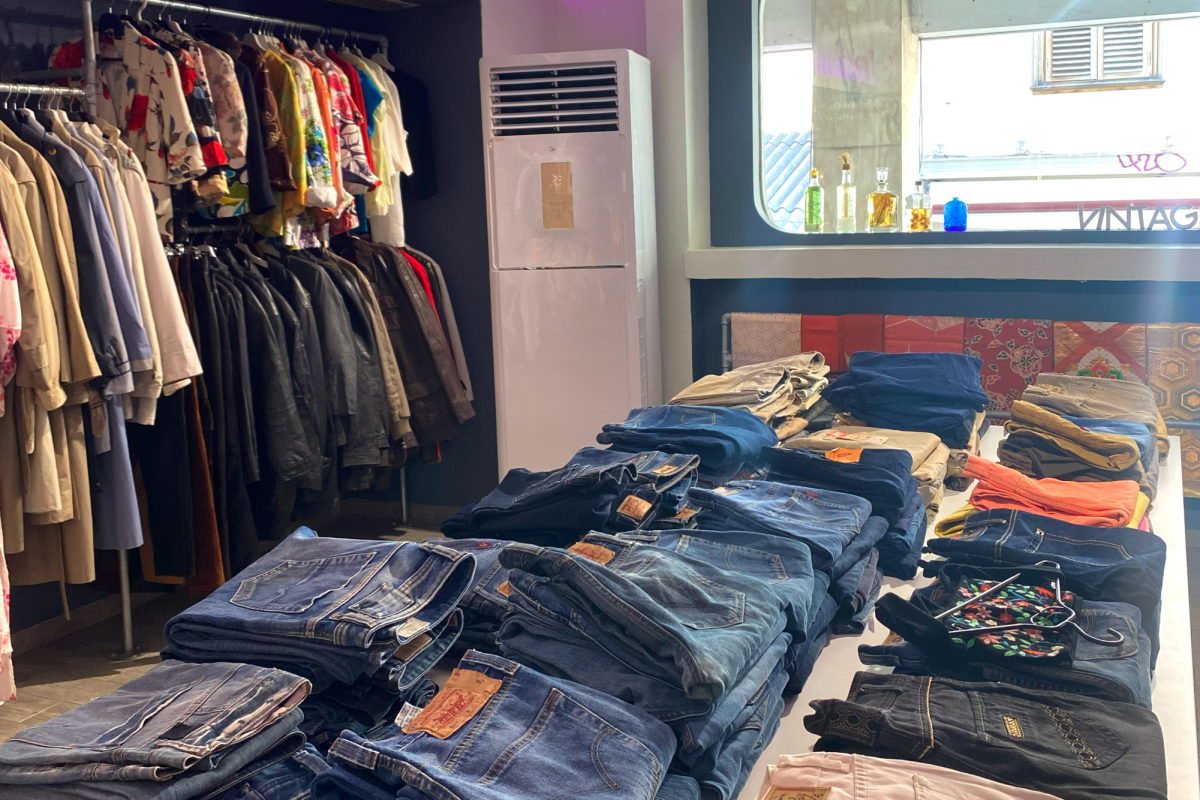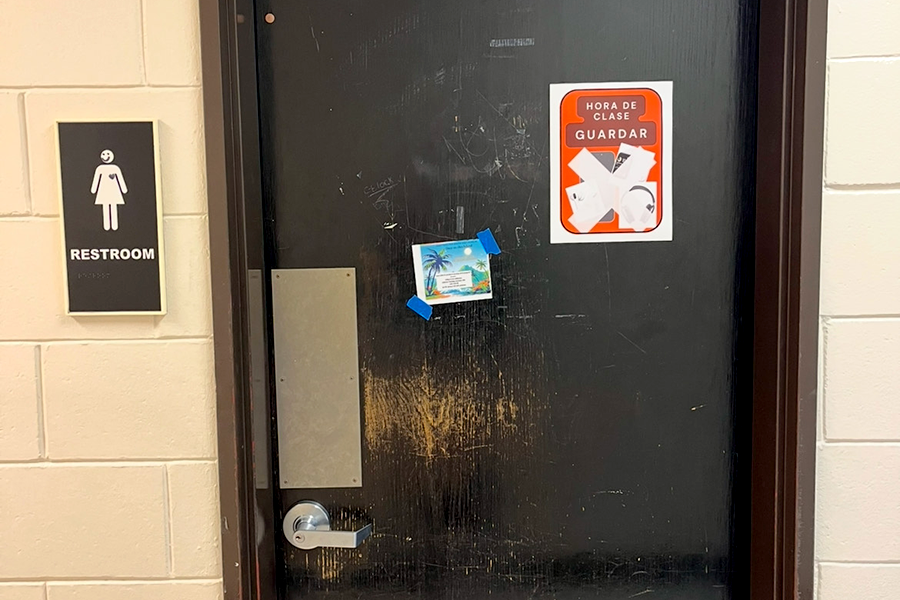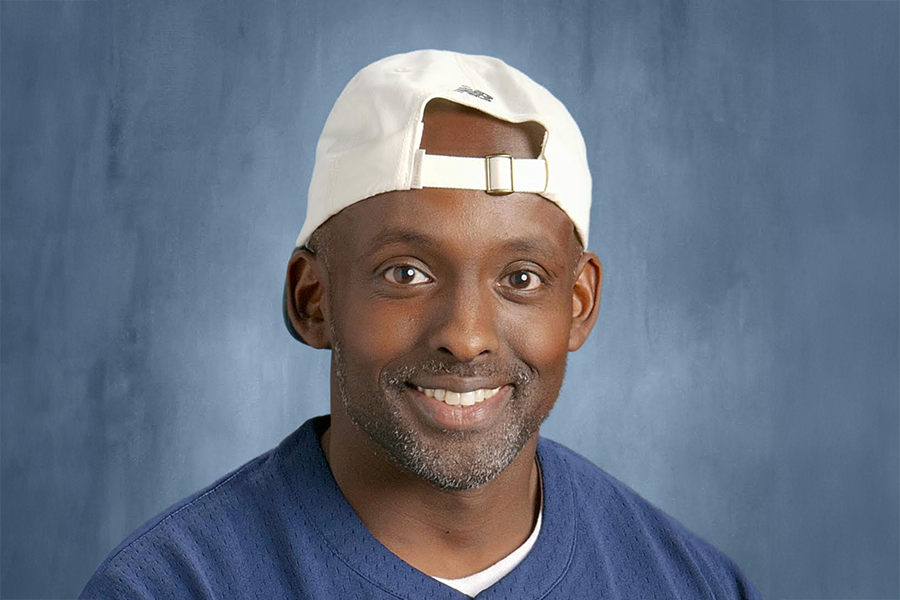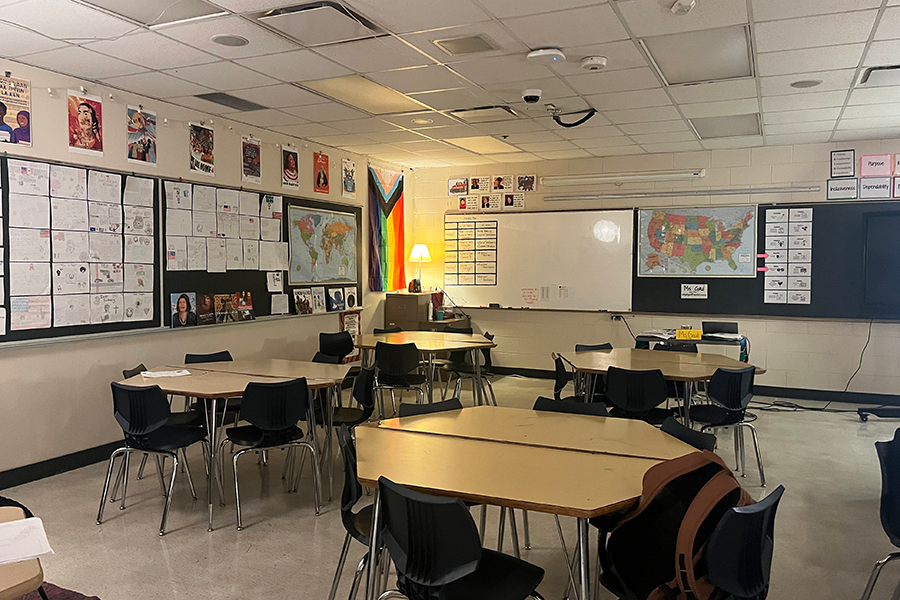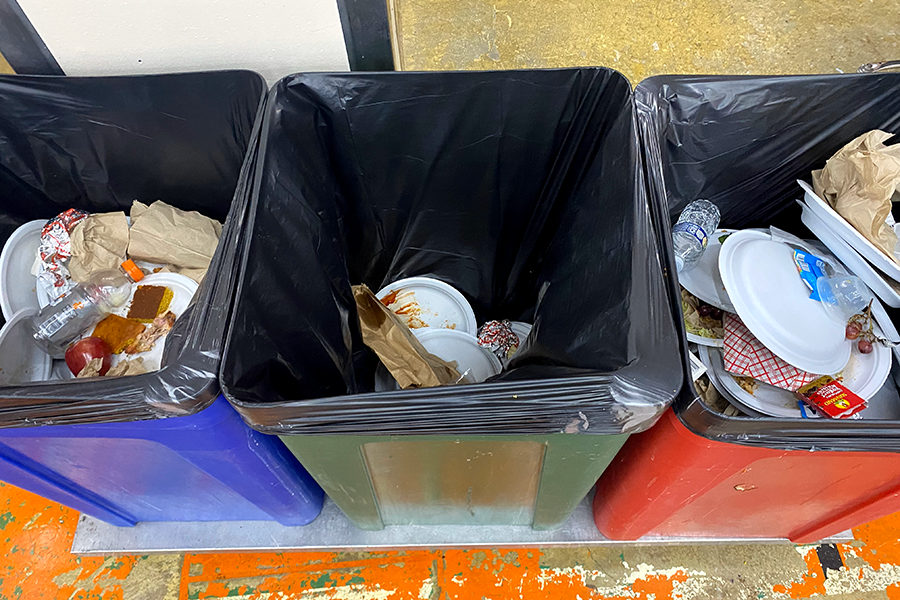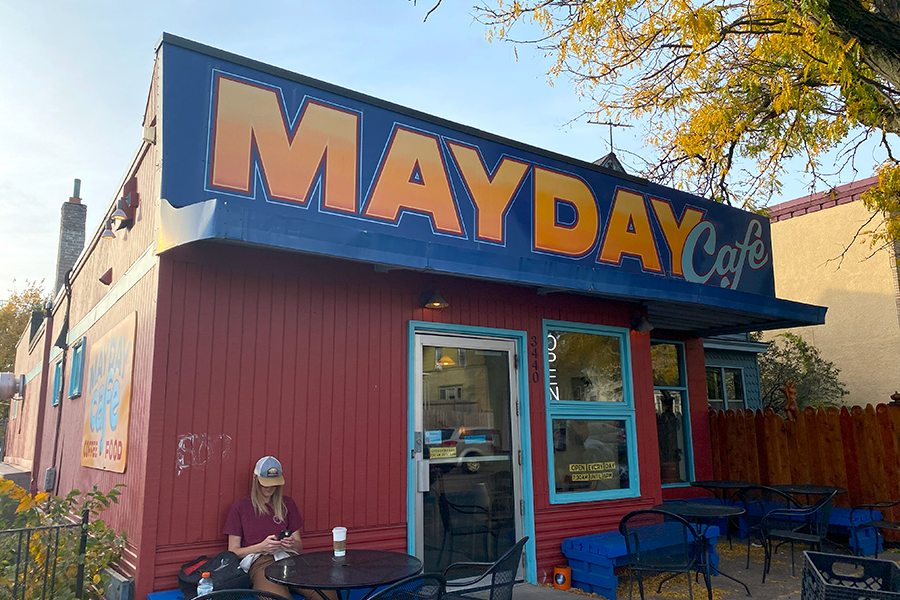The South High Gay Straight Alliance (GSA) is coming back with a vengeance. One need look no further than the giant new banner now hanging in the commons, decorated with 216 bright pink cards, all signed by pledged gay, lesbian, bisexual, and transgender (GLBT) allies during GSA’s first ally drive on National Coming Out Day last October.
“You don’t have to be GLBT in order to be an ally,” says senior Camille Koosmann, a passionate co-president of GSA. The term “GLBT ally” is used to describe someone who counts themselves as a supporter of the GLBT community and its aims. GSA is simply aiming to “get the word out there that we want people to be supportive,” says Koosmann.
That process of getting the word out there extends far beyond the walls of South. GSA visited Anne Sullivan School on October 27th to talk with a class of seventh graders who recently finished reading the novel “The Misfits.” The book centers around the experiences of a gay main character named Bobby, and deals with many issues that gay students face today: name-calling, harassment, and other forms of bullying.
GSA led the Sullivan students in peer educational workshops similar to those of the discontinued Stand Up Speak Out South High (SUSOSH) student group. SUSOSH previously took place on standardized testing days at South and featured students talking with each other about issues such as gender identity, sexuality, race, and acceptance.
SUSOSH ran for only two years, its last year being the 2009-2010 school year.
Koosmann and junior Annamarie Grafing were among four members who led the workshop at Anne Sullivan, which included exercises to teach the students about similar things that were discussed in SUSOSH and included what it means to be gay, lesbian or bisexual.
The workshops also informed students of what resources they have if they need them, things they can do to make their school safer, and terms and words that are hurtful.
GSA hoped to “make them realize [that by using words that were discriminatory against the gay community] they’re hurting a group of people,” says Koosmann.
Plain and simple, the workshops sought to help the students see the intolerance problem in the their school, and empower them to make a change for the better.
The response GSA got was exactly what they had hoped for, but not at all what they had expected. “It was really amazing to see how much it’s changed,” says Grafing, a former Sullivan student who witnessed firsthand the intolerance that used to exist there.
“A lot of the classes were really open,” says Koosmann
“Kids were really excited about us being there, and to be talking about how they could stop bullying and name-calling. No one attacked us or the GLBT community.”
“South is known as a very welcoming school,” says Koosmann, “and that’s why Sullivan contacted us. We talked to all members of GSA about what we wanted to happen at Sullivan. We took that, and taught it to the younger kids.”
“We want people to be accepted for everything they are,” said Grafing, “but a lot of people don’t really make their acceptance known.”
The day at Sullivan was the product of a lot more than just hard work. This time last year, South High’s GSA barely even existed. Koosmann was one of the students who led the effort to restart and reinvigorate the group.
“We really wanted to bring it back really strong,” said Koosmann. “We wanted to be really present, so that people knew that we were there and that we were not going to shut up.”
Koosmann had concerns about bringing back GSA.
“I think that South gets called ‘the gay school’ and it’s known as a very welcoming school. We have a large population of out-and-proud kids here compared to most high schools,” said Koosmann, “but with a lot of the things we’ve been planning with GSA I’ve seen a not-so-accepting side of South, like when we put up our GSA posters and people would write on them or tear them down. You would hear comments about them, and it was a side I’m not really familiar with.”
“The GLBT community has definitely tended to concentrate in a few areas and communities within South,” continues Koosmann. “And even though people are out-and-proud, people outside of those communities still aren’t as accepting as we’d like to think they are.”
For the GLBT community and its allies, it’s a difficult truth to accept. But Koosmann sees the success at Sullivan as only the beginning of a promising run for GSA.
The group is in the middle of several projects, the biggest of which being the creation of an “It Gets Better” video inspired by the recent wave of suicides by gay students in the Anoka-Hennepin school district after being harassed and bullied by their peers.
“Our school is far more tolerant than schools in Anoka-Hennepin,” said Koosmann, “and I think it’s really important that we show them that it’s possible. But first we need to make sure we have a lot of students behind our GSA and our GLBT community. We need to make our school safe so that we can help make other schools safe.”
True to their name, the strong focus of GSA’s plans is the continued and persistent emphasis on allies. The first ally drive was, in essence, a test run to see just how interested the school was. After the resounding response, Koosmann hopes that this is only the beginning of a massive effort to change South for the better.
“I’ve had people come to me since then and ask if we’re going to do it again, where they could find a card to sign, and how they could help,” said Koosmann. “It shows that we really do have allies here.”
There are currently about 15 active members in GSA, but the small size of the group doesn’t hinder their progress, says Koosmann. Even if people don’t have the time to make a full-on commitment to GSA, they still want to be in the know about what’s going on, and what they can do to help GSA achieve their goals.
For GSA, it’s more than just putting up banners and getting people to sign cards. “We hope for total acceptance,” said Grafing. “It’s about uniting everyone.”
Everyone, GLBT or not.
“I really hope that GSA will grow and grow and continue to grow,” said Koosmann. “That’s the ideal. I hope that one day everyone in the school will be an ally.”
There is always the “hope for total acceptance,” said Grafing. “Uniting everyone.”
Ultimately, it boils to down to one basic function of GSA. In Koosmann’s words: “We are here to help South.”


